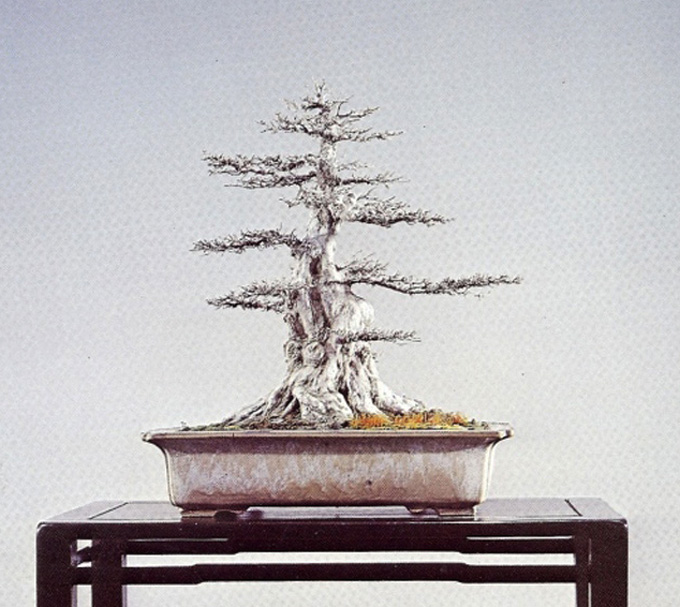 This time I took the liberty of cropping and adjusting the contrast just a bit to attempt to better show the details on this remarkable tree. Here’s our original caption: Trident Maple (Kaede) at the Kokufu-ten in 1972. It now lives in Washington D.C. at the National Bonsai and Penjing Museum. The photo is from Capital Bonsai.
This time I took the liberty of cropping and adjusting the contrast just a bit to attempt to better show the details on this remarkable tree. Here’s our original caption: Trident Maple (Kaede) at the Kokufu-ten in 1972. It now lives in Washington D.C. at the National Bonsai and Penjing Museum. The photo is from Capital Bonsai.
It’s still mid-summer semi-vacation time, so I’m taking the easy way out once again. This post originally appeared just over a year ago. Because I’m such a big fan of the National Bonsai and Penjing Museum (and Peter Tea’s excellent blog) and because this is a good time of year to defoliate (depending on where you live), the choice to feature this one again was easy.
Back to square one
I’m still trying to get back to square one after the 3rd U.S. National Bonsai Exhibition, so I won’t say too much except that I’ve recently come across two excellent posts about Trident maples. The first is at Capital Bonsai and shows the repotting of a famous old Trident that now resides at the U.S. National Bonsai and Penjing Museum, and the second, which is about defoliation (and more), is at Peter Tea Bonsai. Peter is in Japan.
Not to confuse you (maybe to keep you on your toes?), the sequence of the photos below from the two blogs are mixed up just a bit.
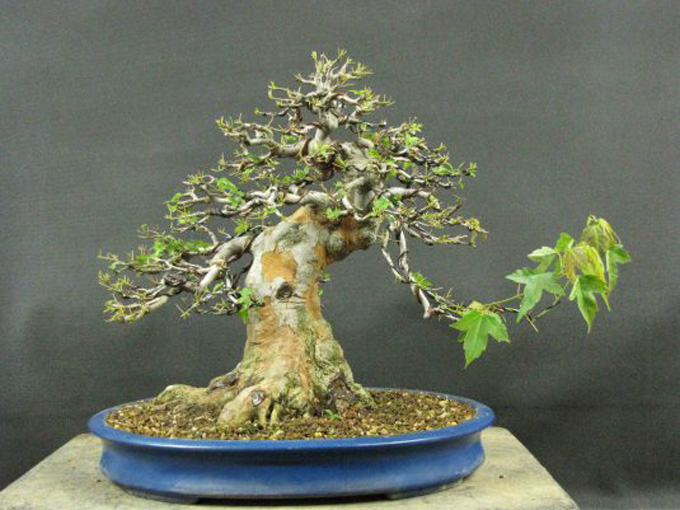 Here’s one of the Tridents (we’ve seen this one before) that is featured on Peter Tea’s blog. It has just been trimmed, defoliated and wired.
Here’s one of the Tridents (we’ve seen this one before) that is featured on Peter Tea’s blog. It has just been trimmed, defoliated and wired.
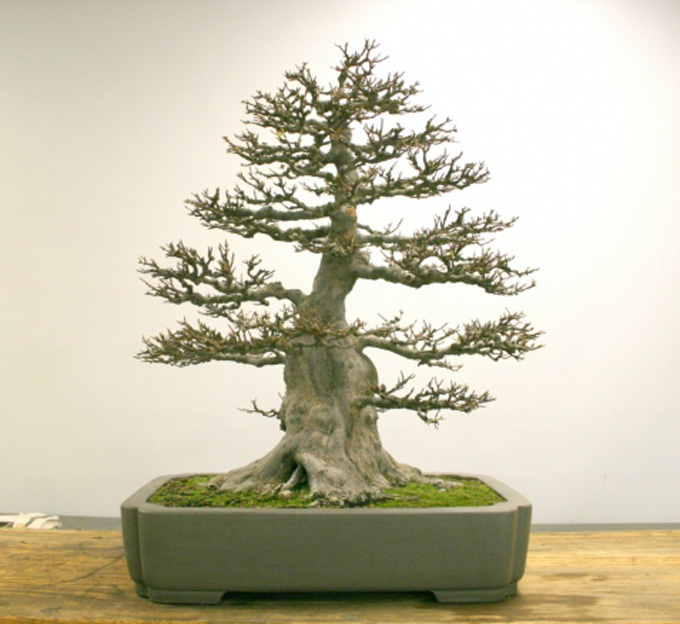 The tree at the top of the page, forty years later.
The tree at the top of the page, forty years later.
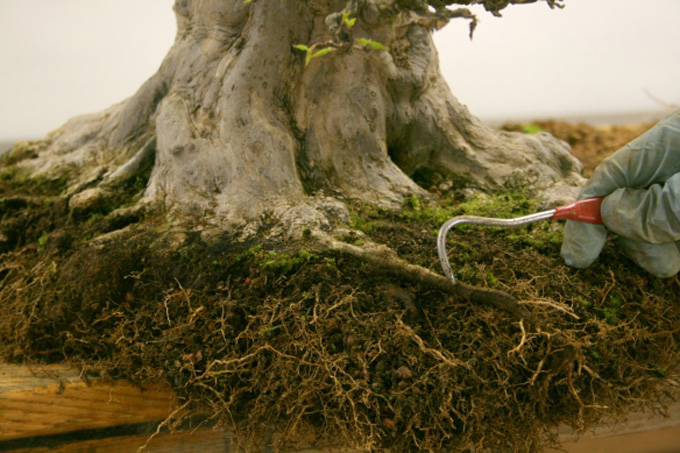 Carefully combing out the surface roots on the famous old Trident at the National Museum. From Capital Bonsai.
Carefully combing out the surface roots on the famous old Trident at the National Museum. From Capital Bonsai.
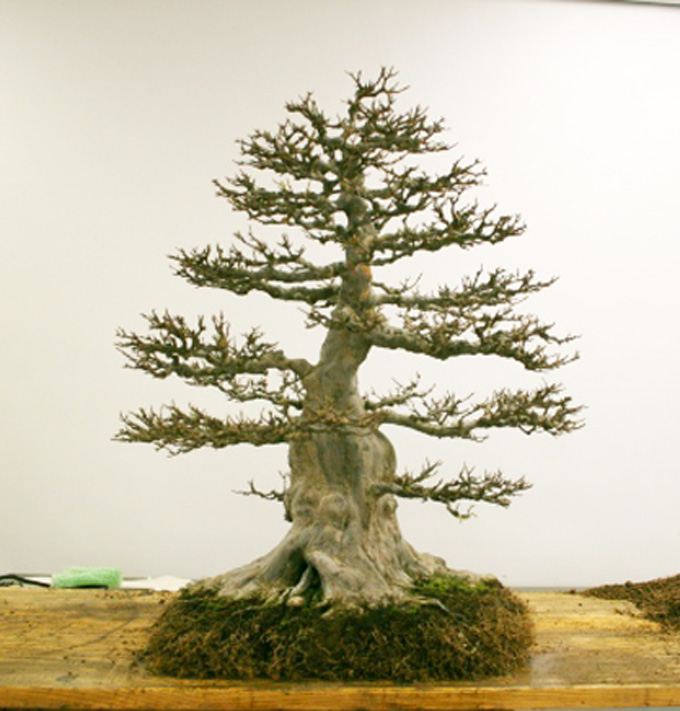 Ready to pot. I like the way the pot-less and almost soil-less condition in this shot, highlights the nebari and lower trunk.
Ready to pot. I like the way the pot-less and almost soil-less condition in this shot, highlights the nebari and lower trunk.
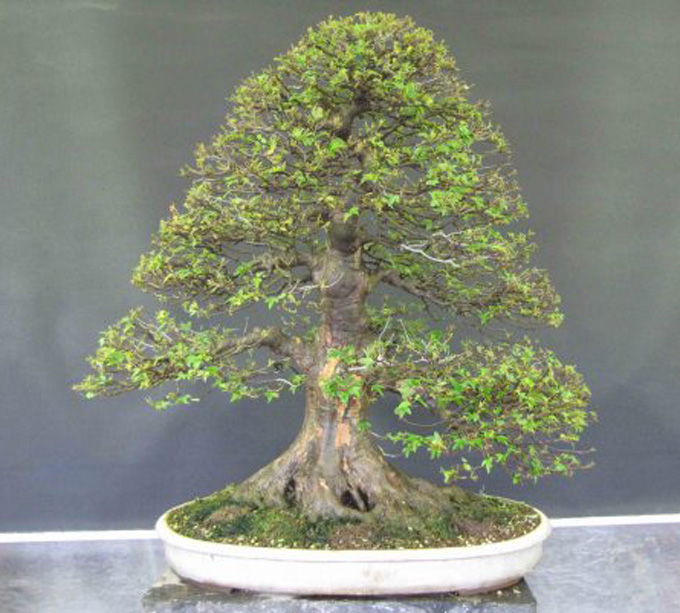 Another Trident from Peter Tea’s blog, in June, after its second defoliation of the season.
Another Trident from Peter Tea’s blog, in June, after its second defoliation of the season.
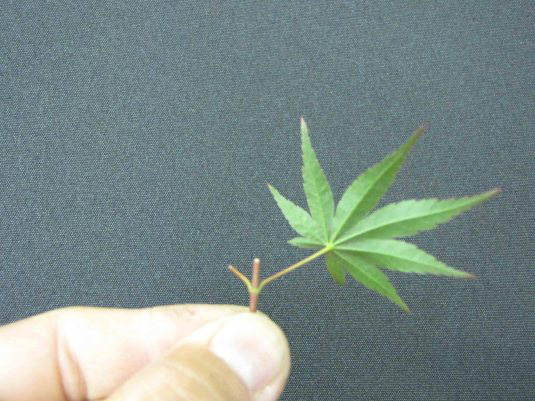 That’s not a Trident leaf! It’s from Peter’s post; the full of which is: The Trident Maple Project and Summer Maple Work.
That’s not a Trident leaf! It’s from Peter’s post; the full of which is: The Trident Maple Project and Summer Maple Work.
RE the first trident:
As I have said before, it’s supposed to be a maple, not a pine tree!
Hi Terry,
Yeah. A Trident shaped like a pine. But then it’s a Kokufu tree, so we’ll just take it as it comes.
The trident at the top of the page looks to have an area of hallow trunk. The later picture doesn’t show any such area. Did it grow over, or is it a different angle. If it grew over, how common is it? Thanks, Carolee
Hi Carolee,
I think it’s scarred wood rather than hollow (sabamiki). If you look closely at the more recent photos, you can see remnants of the scar.